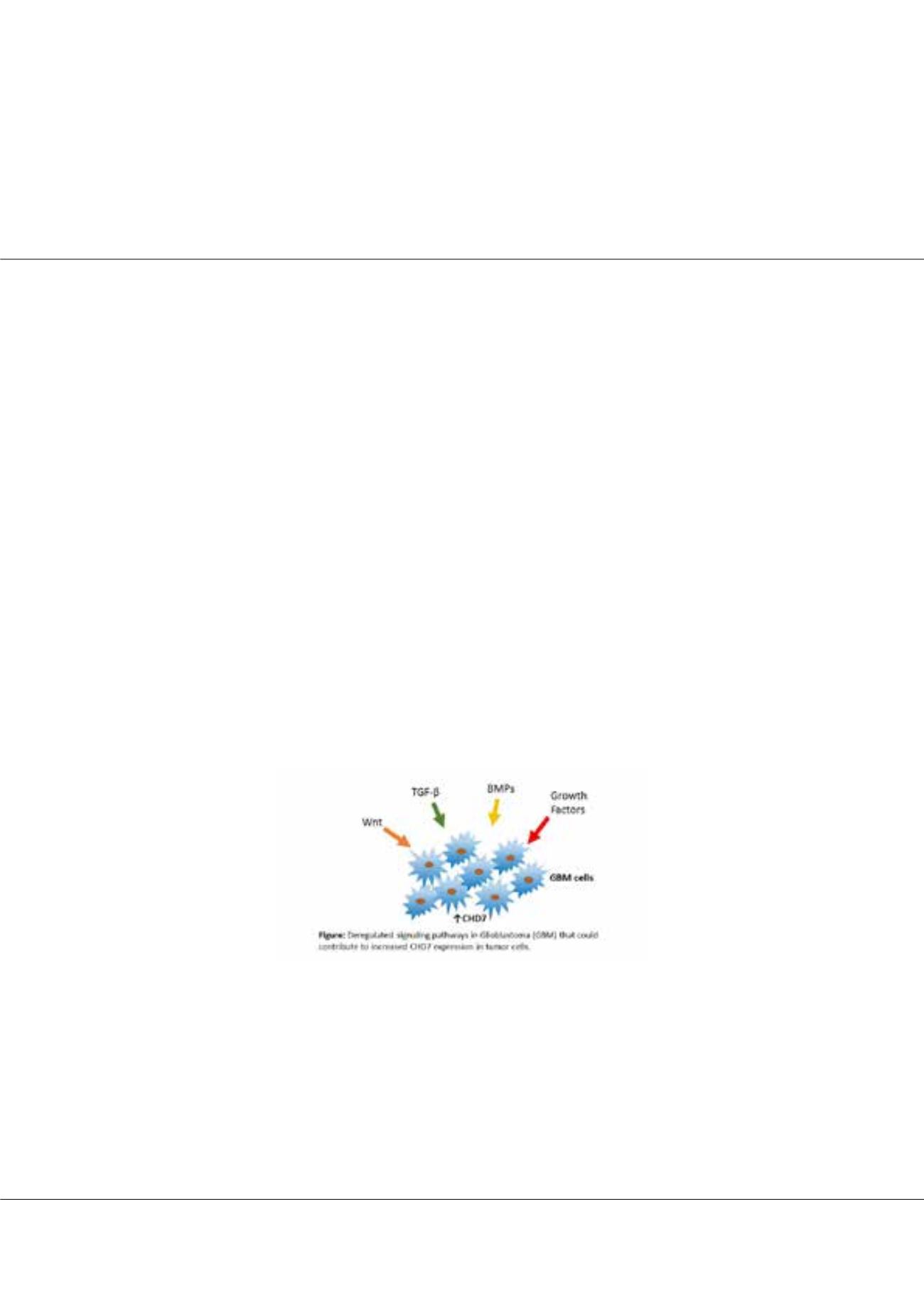

Page 94
conferenceseries
.com
Volume 3, Issue 4
J Clin Epigenet
ISSN: 2472-1158
Epigenetics 2017
November 06-08, 2017
EPIGENETICS & CHROMATIN
November 06-08, 2017 | Frankfurt, Germany
2
nd
International Congress on
Molecular cloning and analysis of the CHD7 chromatin remodeler promoter region
Raquel Arminda Carvalho Machado
1
, Barbara A R Santos
1
, Marina Trombetta-Lima
1
, Christian Bowman-Colin C
2
and
Mari C Sogayar
1
1
University of São Paulo, Brazil
2
Dana Farber Cancer Institute-Harvard Medical School, USA
Statement of the Problem:
Glioblastoma (GBM) is the most common, aggressive and fatal type of cerebral tumor. The average
patients survival rate is 12-15 months, highlighting the urgent need for more effective targeted therapeutics. CHD7 is an
ATP-dependent chromatin remodeler protein that functions in enhancer mediated transcription. Therefore, abnormal CHD7
expression may result in aberrant transcription of tissue-specific genes. Previous results from our laboratory suggest that the
CHD7 gene is highly expressed in glioma patient samples, when compared to normal brain tissue. However, the mechanism
underlying this overexpression is still not understood. In this study, we aimed to identify the CHD7 promoter region and test
different signaling pathways that may directly modulate the expression of this gene in GBM cells.
Methodology &Theoretical Orientation:
To predict the region with promoter activity, we analyzed the CHD7 gene sequence
using the NCBI database. Based on this analysis, we selected the -1149/+619 fragment as a candidate for the CHD7 core
promoter region. We then cloned the sense and antisense sequences into the pGL3 basic vector. The recombinant plasmids
and internal control of marine intestine luciferase expression vector were transiently transfected into 293T cells for validation.
Findings:
By using the luciferase reporter gene assay, we identified a regulatory region of 1.7 kbp for CHD7. This fragment
greatly stimulated luciferase activity by 15-fold, when compared to the empty vector. The antisense sequence did not show
significant activity, indicating that CHD7 expression is regulated by a unidirectional promoter.
Conclusion & Significance:
Our construct is a valuable tool to determine the direct targeting relationship between different
signal transduction pathways and CHD7 gene expression. We believe that this work will be important for better understanding
of the molecular mechanisms that lead to greater CHD7 expression in brain tumor tissue.
Biography
Raquel Arminda Carvalho Machado has her expertise in Neural stem cells and neural plasticity. During her Master degree in Cell Biology Department of the
ETH Zurich, she focused on “Reprogramming adult hippocampal neural stem/progenitor cells and their potential remyelination capacity”, supervised by Prof. Dr.
Sebastian Jessberger. Her current work integrates this knowledge applied to the oncology field. In the last years, she has been particularly interested in the function
of CHD7 in glioblastoma. The construction of a CHD7 promoter luciferase reporter vector is an important step of this work which will certainly contribute to a better
understanding of the role of the tumor microenvironment in the modulation of CHD7 expression in GBM cells.
rmachado@iq.usp.brRaquel Arminda Carvalho Machado et al., J Clin Epigenet 2017, 3:4
DOI: 10.21767/2472-1158-C1-003
















